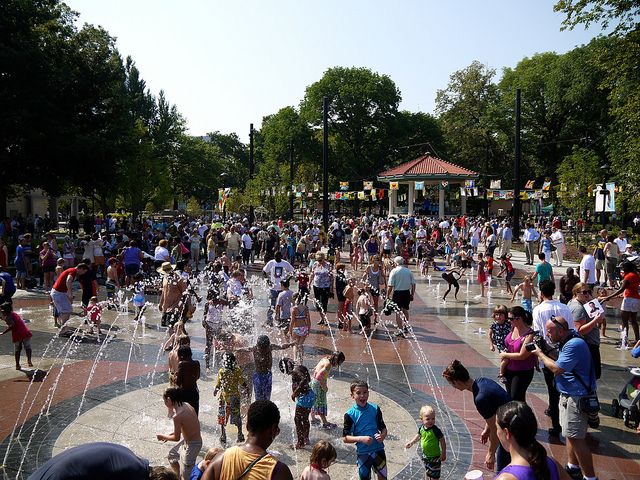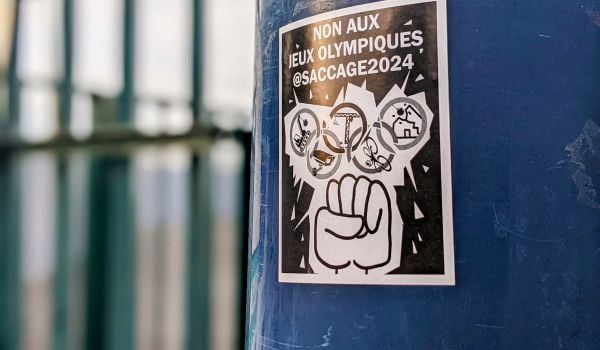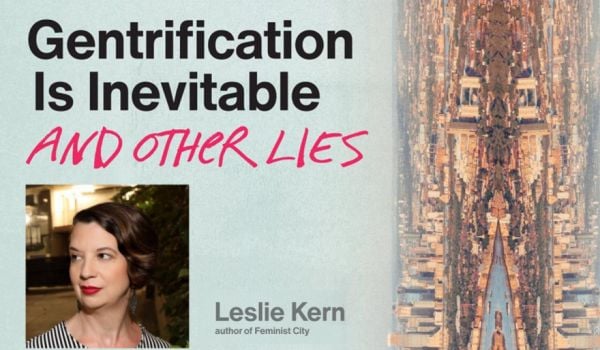Cincinnati’s Over-The-Rhine is like a lot of neighborhoods in Rust Belt cities. It has a dense street grid filled with gorgeous mixed-use architecture, an eclectic population of poor people, bohemians and yuppies, and a sense of vast potential. Its decade-in-the-works renaissance — coupled with the development of the city’s waterfront, a forthcoming streetcar line and hints of cool amenities, like the opening of a 21c Museum Hotel downtown — all add up to a sense of Cincinnati’s new momentum.
Over-The-Rhine’s overhaul was at first ad hoc, with occasional buildings being opportunistically rehabbed, but achieved scale and speed with leadership and investment from the city’s main community development corporation, 3CDC. They developed dozens of new housing units and retail, and shortly thereafter the neighborhood boasted a wine bar, galleries and some of the city’s hottest restaurants. The neighborhood will soon have a new major housing development by McCormick Baron Salazar that incorporates more than 2.5 acres of land and takes advantage of historic property tax credits to restore 20th-century buildings.
But Over-The-Rhine’s tipping point wasn’t in the form of an eco-friendly general store or gourmet popsicle shop (it now has both), but rather the renovation of the neighborhood’s cultural heart, Washington Park.
It’s easy to feel cynical about the gentrification that is transforming not just Over-The-Rhine, but Ohio City in Cleveland, the U Street corridor in Washington, D.C. or just about every last bit of Brooklyn. When dilapidated buildings and underperforming retail spaces become a playground for the bourgeois, there’s a valid sense of loss of the history and grit of a neighborhood that once had a non-commercial, intimate value to residents and close admirers. Worse is when the upscaling of a neighborhood displaces longtime residents who can no longer afford the retail or rents, or when a neighborhood’s culture strictly appeals to an affluent, globalized clientele.
But in place of the physical neighborhood grit, gentrification spurs grit of another kind — the courage to risk and invest — involved in trying to restore a neighborhood’s assets. It becomes harder to complain about gentrification when investment returns to the community the benefits of street lights, restored facades, new trees and eyes on the street.
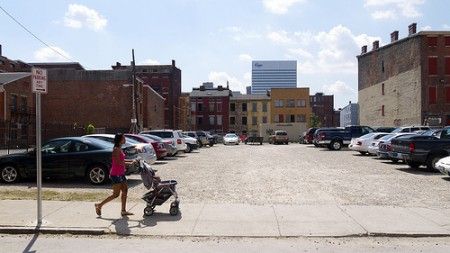
A lot in Over-the-Rhine slated for future development. Credit: Travis Estell on Flickr
In this contested territory of how to best to develop and renew a neighborhood, parks should be an objectively good thing, right? They benefit everyone. They encourage a healthy lifestyle. It doesn’t cost anything to use them.
But even parks have become politicized in 21st-century urban renewal. Chicago’s Millennium Park and New York’s High Line have set a new bar for park design, suggesting that a park needs high production values to be successful. Millennium Park cost $475 million, more than half of which was sported by the city and the rest of which was paid for by donors, including corporations who got naming rights in return (ie., the McDonald’s Cycle Center, the BP Pedestrian Bridge). While the park has been a wonderful asset to the city, and has already paid for itself in tourist dollars spent in the neighborhood and increased property values, its model is hardly the best or most replicable one.
Meanwhile, the High Line, now New York City’s most touristed site, has recently been attacked for the way it spurred a gaudy slew of luxury buildings and attracted so many tourists it has threatened the nature of its neighborhood, Chelsea. Isn’t there a better compromise between an under-funded, forlorn patch of grass and a luxury park?
Race Street Pier in Philadelphia, created by the same designer as the High Line but with a meager budget comparatively, is a gem on the Delaware River that proves the value of placemaking. But its isolated location and small scale have handicapped its popularity; the Pier’s key achievement has been sparking other development along the boulevard where it sits. But it’s no Rittenhouse Square — the park and gathering place that Jane Jacobs lauded because of the way it attracts and sustains visitors.
Here would be a good moment to invoke the gospel of Jane:
“Conventionally, neighborhood parks or parklike open spaces are considered boons conferred on the deprived populations of cities. Let us turn this thought around, and consider city parks deprived places that need the boon of life and appreciation conferred upon them. This is more nearly in accord with reality, for people do confer use on parks and make them successes — or else withhold use and doom parks to rejection and failure.”
Reading Jacobs suggests that the key question about parks shouldn’t be how to design or pay for them, but simply, How can we attract people to them? Starting with that question, cities might better devise solutions for where and how to invest in parks.
Since Washington Park re-opened in Over-The-Rhine, it has been a resounding success. The park faces the Cincinnati Music Hall on one end, a K-12 school on another, and the neighborhood on the remaining two sides. On a recent day in mid-August, it teemed with a variety of users: Children played on a jungle gym area and in a series of water fountains. A small vessel that looked like a bird bath served as a toddler’s jacuzzi. Dogs and their owners ran around the dog park. A series of steps that trickled with a light stream of water bathed a woman’s feet as she sat and read a book. Other people sat on benches talking to each other. A field proudly showed off its signs of wear from the weekly kickball league and equally frequent concerts in the park. Entrances to an underground parking garage looked like mini Apple stores and a concession stand was discretely tucked in one corner. In a city that can often feel segregated by race and class, the park encompassed all kinds.
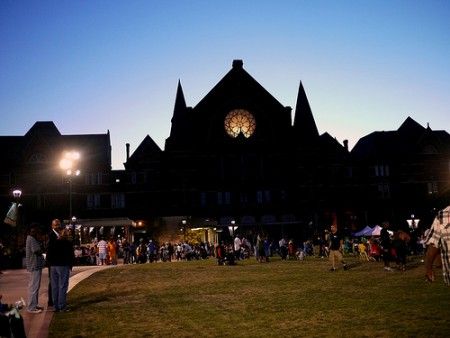
Washington Park at twilight. Credit: Flickr user 5chw4r7z
Like many aspects of Over the Rhine, 3CDC led the charge on this project, helping to secure funding and execute the two-year-long renovation. But as the programming — not just kickball and concerts, but Shakespeare, date-night movies and festivals — attests, this park is quickly being owned by the neighborhood. At $48 million, it delivers a ton of bang for the buck.
In an era when politicians are rethinking too-big-to-fail banks and increasing debt to spur greater growth, Washington Park shows how cities can move past the model of massive investment, born on the backs of corporate support and increased gentrification. As cities struggle to figure out how to support parks without taxing the city’s budget, new models of how to build the next generation of Rittenhouse Squares are needed.
Famous projects coming out of New York — where there is a perilous reliance on the city’s upper class to subsidize parks, either through conservancies or through the revenues generated by nearby luxury property developments — rarely apply in smaller cities. While parks are appreciated for their contribution to a city’s environmental sustainability, it’s equally important that their social and economic sustainability factor into the plan.

Diana Lind is the former executive director and editor in chief of Next City.

